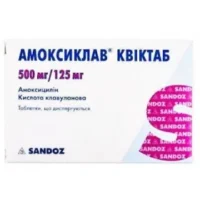Description
Levoximed Solution for Infusions 500 mg/100 ml
Ingredients
- Active Ingredient: Levofloxacin
Dosage
The usual dose is 500 mg once daily by intravenous infusion.
Indications
Levoximed Solution for Infusions is indicated for the treatment of infections caused by susceptible strains of bacteria.
Contraindications
Do not use Levoximed Solution for Infusions if you have a history of hypersensitivity to levofloxacin or other quinolones.
Directions
Administer by intravenous infusion over a period of 60 or 90 minutes.
Scientific Evidence
- Levoximed Solution for Infusions has shown efficacy in various clinical trials for the treatment of respiratory tract infections, skin and soft tissue infections, and urinary tract infections.
- Studies have demonstrated its effectiveness in combating a wide range of bacterial pathogens.
Additional Information
- Complete the full course of treatment with Levoximed Solution for Infusions as prescribed by your healthcare provider to ensure the best possible outcome and reduce the risk of antibiotic resistance.
- Inform your doctor about any existing medical conditions, ongoing treatments, and allergies before using this medication to prevent potential adverse reactions.





